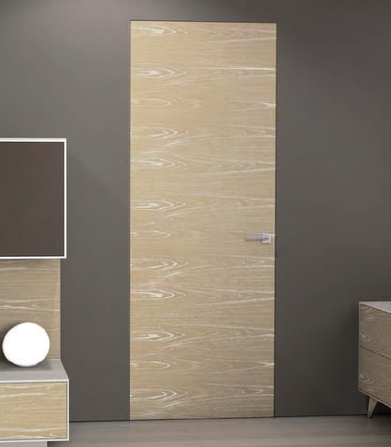What is a Door? Information for Beginners.
What is a door? How is it made? What is it made of? What are its uses? We want to touch a little bit on all the points above in this article.
A door is used to connect to areas which may be two rooms or the exterior and interior of a house. It provides the pathway to travel between these two areas. A door, in its most basic form, is made up of some sort of panel of a certain material that can be swung or slid open. This panel may be hinged on a door frame or just the supporting wall.
This article will deal with the more common doors in use today.
1) Door Components
a) The Door Panel (Leaf)
The door panel or leaf is the part of the door that moves. It usually is as big as the opening and sometimes can be seen split into two parts (as sometimes seen in barns with a horse looking out). The panel might swing left or right or slide sideways (or even upwards). It can be made up of many different materials such as wood, steel, iron, aluminum, PVC, glass, etc.
b) The Door Frame
The frame surrounds the panel and holds it in place. It is comprised of 2 jambs (sides), a header (top) and a sill (bottom). On interior doors there is no sill needed. Door frames are usually not pronounced and can blend with the wall they are mounted into. Materials used for frames are as numerous as for panels.
c) The Door Trim (Liner or Casing)
The trim is the decorative part of a door that is used to visually join the frame and wall interface together. They are mostly applied to the wall with a slight overlap onto the frame making it appear that the frame is wider than it really is. Again, trim materials can vary but usually are made of wood.
d) The Hinge or Rolling/Sliding Track
A swinging door requires hinges at the panel-frame interface. A sliding door requires some sort of top or bottom (or both) track that the panel slides along to either the left or right. Swinging Door hinges are usually made out of metal for strength reasons (just like sliding tracks) and at least 2 are required for a one-panel door.
e) The Door Handle and Lock
Doors no not necessarily need a handle or lock but we do at least see a handle on most. It is just easier to have a good grip when moving the panel. Handles are usually made out of metal or possibly wood. Door locks can come in a variety of forms such as thumb turn, latch-type, hook or keyed locks. Most locks are made of metal for strength and durability.
2. Door Uses
Doors are most likely one of the oldest inventions in the world. Closing off a gateway must always have its uses. Without touching on mobile doors (such as cars) the two main uses today are “Exterior” and “Interior” Doors.
a) Exterior Doors
This type of door provides the entry and exit to a house. It has a sill and weather strips to be able to seal the elements out more effectively. It is also the main attraction on the front of the house as the main point of entry. Exterior doors provide a better insulating value than interior doors and aim at minimizing heat transfers from exterior to interior on cold days.
Exterior doors can be made up of more than one panel as seen in Double Doors or Folding/Accordion Doors in order to produce a greater opening. In general, exterior doors are bigger and heavier than their interior counterparts. The use of glass in exterior doors is very common.
This type of door is the passage way between rooms. It is commonly smaller and lighter than the exterior door but purpose and materials are similar. They have no sill, since airflow beneath the door is usually welcomed inside a home.
3. Door Styles
Doors can be either traditional or modern and very seldom a mix of the two. Modernity dictates the absence of ornate wood carvings, for example. It tends to simplicity and straightness.
Traditional doors try to mimic the more detailed craftsmanship of days gone by.
Doors can be made with a single panel or many panels to provide a varying degree of open space and light.
Interior doors do not always have to be between rooms but can divide a bed room from a closet space. This is usually done via sliding doors to save space.
We see larger doors in barns and garages and in these instances the doors slide or move upwards parallel to inside ceiling. Design is sacrificed for functionality in most barn and garage scenarios.
It has to be said that doors are so common that not much thought is spend on them unless you are in the process of buying them perhaps. But every now and then you see one that impresses you. So the oldest inventions are still the most useful after all.
Concealed Door Frames are now more popular than ever. Liked by architects and designers, they are now being installed in many high-end homes in North America. Flush Doors with Hidden Hinges do just look so much better than the old fashioned counter-part, the trimmed door.
Frameless Door examples can be seen here. Interior Doors Vancouver – Vancouver’s best selection of Frameless Doors and Invisible Doors and European Interior Doors.
